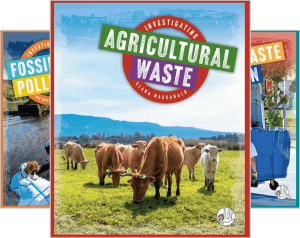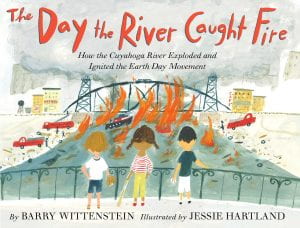 Investigating. A Child’s World, 2023. $24.95 ea. 32 p. Grades 3-8.
Investigating. A Child’s World, 2023. $24.95 ea. 32 p. Grades 3-8.
Edwards, Sue Bradford. Fossil Fuel Pollution. 978-1-503-85806-0.
Gagliardi, Sue. Household Waste Pollution. 978-1-503-85811-4.
Henzel, Cynthia. Manufacturing Pollution. 978-1-503-85810-7.
—. Noise Pollution. 978-1-503-8581-21.
MacCarald, Clara. Agricultural Waste. 978-1-503-85807-7.
—. Nuclear Pollution. 978-1-503-85809-1.
Perdew, Laura. Light Pollution. 978-1-503-8580-84.
—. Plastic Pollution. 978-1-503-85805-3.
The focus of this nonfiction series is on pollution. It discusses the cause, the harm, and what humans can do to reduce pollution.The book concludes with a table of contents, fast facts, phonetic glossary, additional resources, source notes, and an index. Other books in the series focus on these topics: plastic pollution, nuclear pollution, manufacturing pollution, household waste pollution, fossil fuel pollution, and agricultural waste pollution.
THOUGHTS: This series is a good addition to enhance upper elementary and middle school library collections seeking to update the environment and STEM section.
300s Environmental Protection


